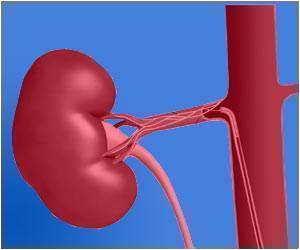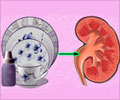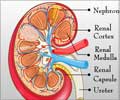According to trial results, kidney failure patients on dialysis derive long-term benefit from the minimally invasive placement of a stent that improves the function of dialysis access grafts.

Every year nearly 400,000 people undergo dialysis, said Haskal. Doctors access and filter the blood through delicate grafts or veins that often collapse because they can't handle the high-pressure circuit of purified blood being fed back into the body, forcing doctors to continually reopen them or create new treatment access sites. Twelve-month results of RENOVA, a prospective, multicenter, randomized trial , show these dialysis sites can be successfully kept open using tiny scaffolds called stent grafts for far longer than previously reported. In the study—named SIR's Abstract of the Year—270 dialysis patients treated for collapsed access sites at 28 U.S. centers were randomized and 138 subjects underwent stent grafts while the remaining 132 had balloon angioplasty. After 12-month follow-up, researchers found that two and half times more patients in the stent graft group were able to continue to use their dialysis access grafts, than those who were being treated by balloon angioplasty alone (without invasive interim procedures). Until this data, grafts have been considered short-term solutions, with 75 percent requiring invasive interventions in under a year, said Haskal.
An estimated 1 in 10 Americans has some form of chronic kidney disease, according to the National Institutes of Health. End-stage renal disease means the kidneys have failed and can no longer filter waste products from the blood. This condition is fatal without a kidney transplant or dialysis to prevent blood poisoning. An arteriovenous fistula is the gold standard for dialysis access and involves creating a natural blood vessel bypass, but many patients, especially those who are too ill to undergo the invasive surgery, have an arteriovenous graft—a plastic tube sewn into the vein, which easily clogs, explained Haskal.
"This area where the graft is sewn in, that allows blood to flow back up the arm toward the heart, has particular turbulence," said Haskal. "That turbulence, like a river bend, tends to incite tissue growth at the sides. Just like a river depositing sediment along a bend, these veins thicken and narrow. More than 100,000 angioplasties are performed a year due to this narrowing. What this stent method does is not only reopen the vein, but turn the graft into an inline flow, so that the blood enters the vein at a more natural angle," he added.
The stents, made of a medical-grade plastic, are implanted at the time of balloon angioplasty, a minimally invasive technique interventional radiologists perform using just a small incision and medical imaging to guide it to the narrowed vein. A small balloon is inflated expanding the vein and setting the stent in place. The resulting reduction of wear and tear due to these stent grafts helps dialysis access sites stay healthy and open months and even years longer than researchers had hoped.
"It was a wholly foreign concept when we started," said Haskal. "People told me it was crazy. Anecdotally we now have patients who have these stent grafts that are still open after three years. That is practically unheard of," said Haskal, who is also editor of the Journal of Vascular and Interventional Radiology. "This controlled study proves that we can achieve durable long-term solutions for these patients, reducing their invasive procedures and thus improving their quality of life," he added.
Advertisement











